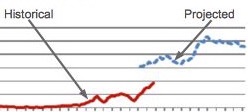Putting operational managers in control of performance
The "exceptions table" sounds innocuous enough. But whoever controls it has the power to transform the management of entire hospitals.
The trouble with in-house spreadsheet models is that they aren’t flexible enough, so you keep having to start again from scratch when there’s a new planning task to do. When that happens, you lose the learning and all the effort that went into it.
So we designed Gooroo Planner to become part of an intelligent system that learns with you, expertly combining the knowledge of your operational managers with the skills of your information analysts. Whenever you improve your modelling – whether around clinical pathways, or subspecialties, or improving performance, or support services – this new intelligence is built into your evolving query code and data tables.
So whenever you refresh your planning – whether it’s for operational purposes, or a Board report, or the annual planning round – all that intelligence and learning is built in to every model.

The "exceptions table" sounds innocuous enough. But whoever controls it has the power to transform the management of entire hospitals.

You could model follow-up outpatients directly, as waiting list services within complex clinical pathways. But setting the data up is rather fiddly, and there is a more straightforward approach.

"Oh, didn't we tell you we're doing a waiting list initiative?" Clinical support services, such as radiology, can feel a bit miffed when they are suddenly hit with a surge of work that was planned ages ago but nobody told them about. Fortunately it's easy to build them into your plans.

Operational managers often like to see their capacity plans at sub specialty level, especially in general surgery and orthopaedics. This is easily done in Gooroo Planner, but here are some things you may need to watch out for. And it's similar for other levels of detail, such as hospital site, commissioner, and procedure based modelling.

Working out the theatre and clinic capacity you need, and making a comparison with what you have, is one of the most important calculations you will do with Gooroo Planner. But not everything about session capacity is straightforward (and you may not have all the data) so here is a guide to help you do it all.

After the initial 'one-day' implementation of Gooroo Planner, one of the first refinements you will want to make is around the diagnostic stage of treatment. Fortunately, it's easier than you might think.

Clinical pathways don't always run in straight lines. Here is how you can model even quite complex pathways quickly and easily using Gooroo Planner.

How many patients are expected to breach the target every week? It's a good question. To answer it, you need to understand how patients are being scheduled.